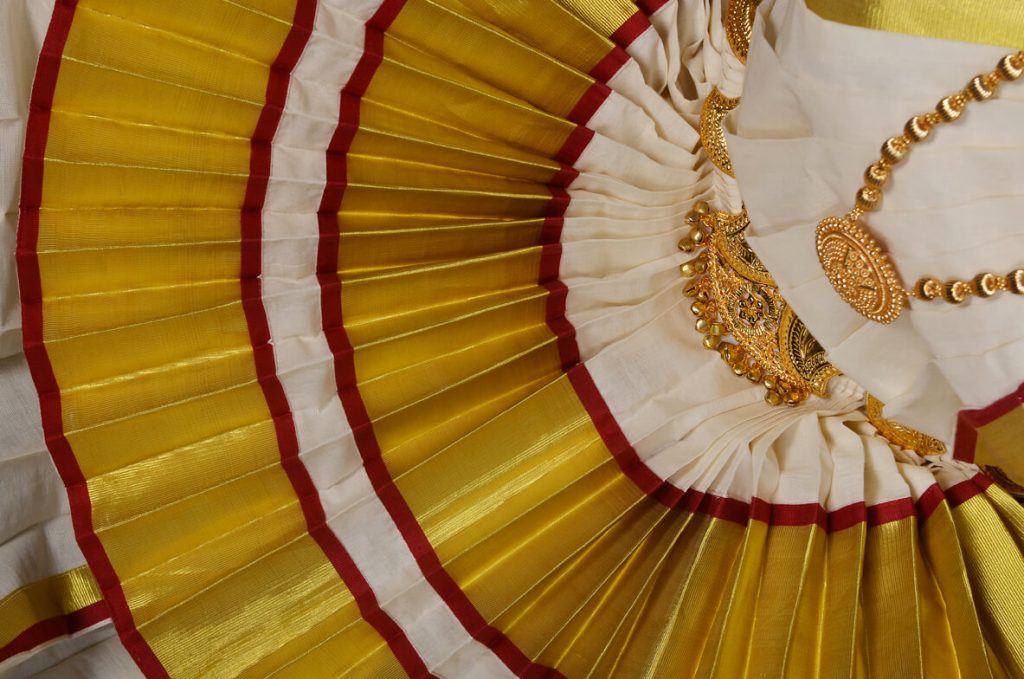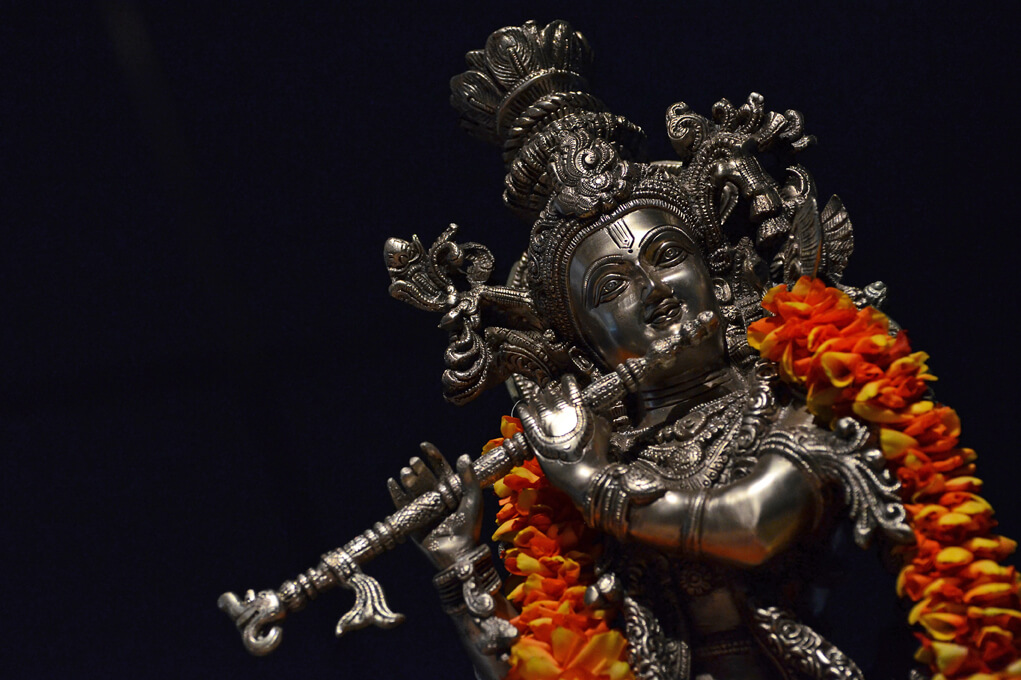“There are only two ways to live your life. One is as though nothing is a miracle. The other is as though everything is a miracle.”
Albert Einstein
Mohiniyattam is a temple dance from Kerala in South India. It’s the dance of the enchantress after a myth of Lord Vishnu in which he appears in his female form as the beautiful and charming Mohini. The dance form can be recognized by its gentle flowing and graceful movements. An old saying goes that the dancer moves as gently as the tender paddy plant in the soft breeze. Mohiniyattam is therefore completely “lasya”, a Sanskrit term which can be translated into English as “gentle”. Cherished over the centuries, Mohiniyattam has an elaborated Abhinaya, the expression of the eyes and face, which along with the Mudras, the hand gestures, is used to tell the stories from Hindu mythology. Hence another proverb says that the face of the dancer is as radiant as the rising sun. In comparison to other Indian classical dance forms, in Mohiniyattam emotions are already expressed in different Adavus, the basic movements.

The dance can be indicated by its white skirt costumes with golden border and golden jewellery. Like the dance, costume, jewellery, makeup and hairstyle are exactly specified. The bells around the ankles, a typical feature in traditional Indian dance, work as a musical instrument played by the rhythmical movements of the feet, which accompany the song. The Idakka drum, where the pitch can be changed while playing, is a unique instrument used in Carnatic music to which Mohiniyattam is danced. It comes from the so-called Sopana tradition, a tradition of temple musicians in Kerala, who sing the mantras in the sanctuaries of the temples to the beat of their drums.
Mohiniyattam once was exclusively danced by Devadasis, the temple dancers. Early archeological discoveries of this sacred art form reach back to the 11th century. Outside the temples the dance reached the heyday in the 19th century under Maharaja Swathi Thirunal of the kingdom of Travancore who established Mohiniyattam as an art form at his court. As a brilliant music composer he wrote numerous compositions for Mohiniyattam. In the beginning of the 20th century the knowledge of the devotional art had nearly disappeared. Fortunately the famous dancer and poet Kalyani Kuttyamma revived the dance at Kerala Kalamandalam, the major academy for performing arts in Kerala, together with Vallathol Narayana Menon, the founder of the academy. They established Mohiniyattam as a stage art across the borders. Kalyani Kuttyamma was the first to compile the knowledge of the traditional art form, structure the Adavus, revive old choreographies and complete a full repertoire by adding her own compositions and choreographies. Today Mohiniyattam is present in cultural events all over Kerala, in India and abroad. The precious and unique heritage of Kalyani Kuttyamma is preserved by her former student, Shyamala Surendran, founder and head of Dharani School of Performing Arts in Cochin, together with the Guru’s daughters, Kala Vijayan and Sreedevi Rajan. As an outstanding artist, choreographer and teacher herself, Shyamala Surendran is completely dedicated to promote this fascinating art form and to further build it up by maintaining high educational standards.

